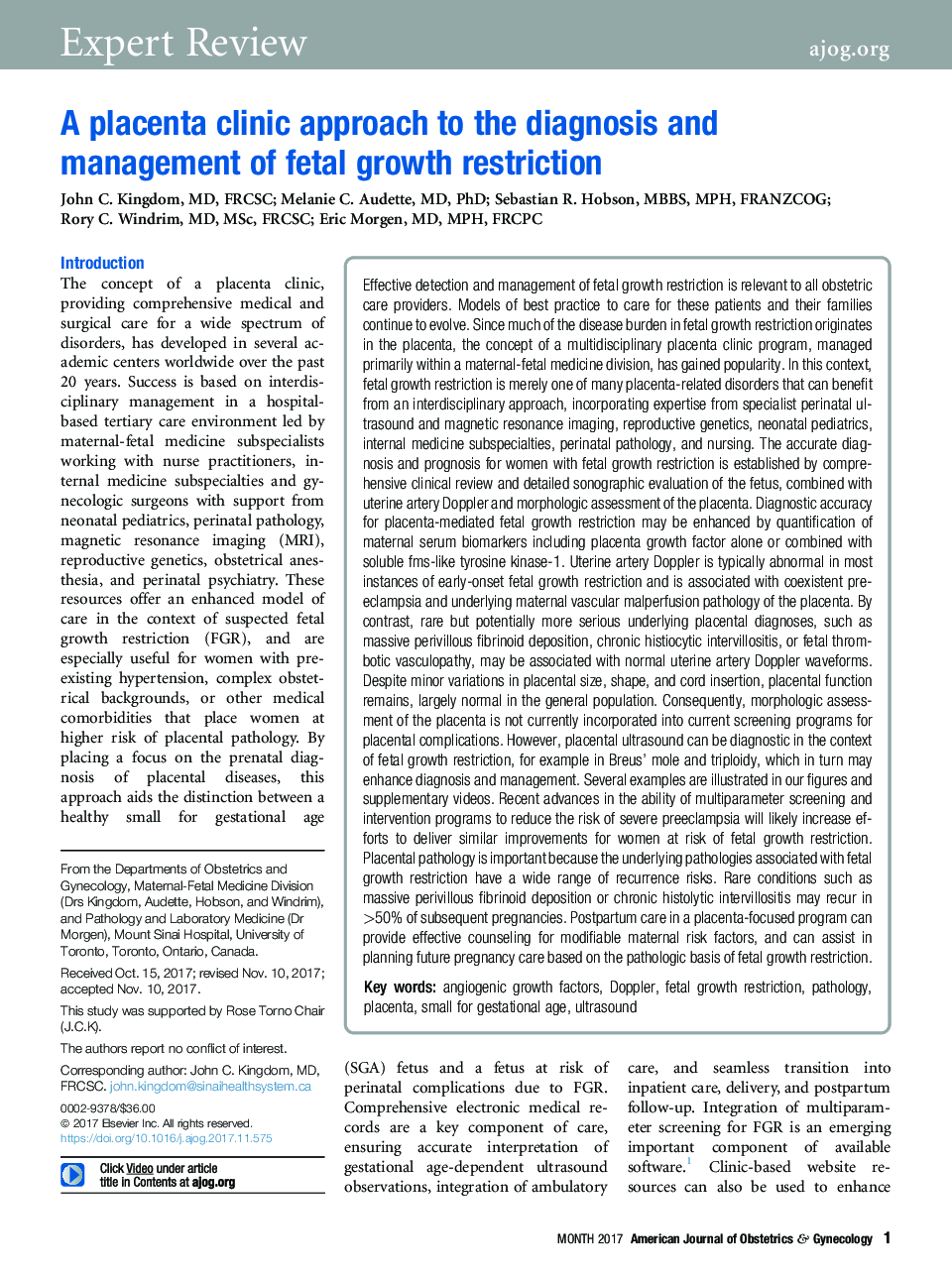| کد مقاله | کد نشریه | سال انتشار | مقاله انگلیسی | نسخه تمام متن |
|---|---|---|---|---|
| 8752818 | 1594866 | 2018 | 15 صفحه PDF | دانلود رایگان |
عنوان انگلیسی مقاله ISI
A placenta clinic approach to the diagnosis and management of fetal growth restriction
ترجمه فارسی عنوان
رویکرد کلینیکی جفت به تشخیص و مدیریت محدودیت رشد جنین
دانلود مقاله + سفارش ترجمه
دانلود مقاله ISI انگلیسی
رایگان برای ایرانیان
کلمات کلیدی
عوامل رشد آنژیوژنیک، داپلر، محدودیت رشد جنین، آسیب شناسی، جفت کوچک برای سن حاملگی، سونوگرافی،
موضوعات مرتبط
علوم پزشکی و سلامت
پزشکی و دندانپزشکی
پزشکی و دندانپزشکی (عمومی)
چکیده انگلیسی
Effective detection and management of fetal growth restriction is relevant to all obstetric care providers. Models of best practice to care for these patients and their families continue to evolve. Since much of the disease burden in fetal growth restriction originates in the placenta, the concept of a multidisciplinary placenta clinic program, managed primarily within a maternal-fetal medicine division, has gained popularity. In this context, fetal growth restriction is merely one of many placenta-related disorders that can benefit from an interdisciplinary approach, incorporating expertise from specialist perinatal ultrasound and magnetic resonance imaging, reproductive genetics, neonatal pediatrics, internal medicine subspecialties, perinatal pathology, and nursing. The accurate diagnosis and prognosis for women with fetal growth restriction is established by comprehensive clinical review and detailed sonographic evaluation of the fetus, combined with uterine artery Doppler and morphologic assessment of the placenta. Diagnostic accuracy for placenta-mediated fetal growth restriction may be enhanced by quantification of maternal serum biomarkers including placenta growth factor alone or combined with soluble fms-like tyrosine kinase-1. Uterine artery Doppler is typically abnormal in most instances of early-onset fetal growth restriction and is associated with coexistent preeclampsia and underlying maternal vascular malperfusion pathology of the placenta. By contrast, rare but potentially more serious underlying placental diagnoses, such as massive perivillous fibrinoid deposition, chronic histiocytic intervillositis, or fetal thrombotic vasculopathy, may be associated with normal uterine artery Doppler waveforms. Despite minor variations in placental size, shape, and cord insertion, placental function remains, largely normal in the general population. Consequently, morphologic assessment of the placenta is not currently incorporated into current screening programs for placental complications. However, placental ultrasound can be diagnostic in the context of fetal growth restriction, for example in Breus' mole and triploidy, which in turn may enhance diagnosis and management. Several examples are illustrated in our figures and supplementary videos. Recent advances in the ability of multiparameter screening and intervention programs to reduce the risk of severe preeclampsia will likely increase efforts to deliver similar improvements for women at risk of fetal growth restriction. Placental pathology is important because the underlying pathologies associated with fetal growth restriction have a wide range of recurrence risks. Rare conditions such as massive perivillous fibrinoid deposition or chronic histolytic intervillositis may recur in >50% of subsequent pregnancies. Postpartum care in a placenta-focused program can provide effective counseling for modifiable maternal risk factors, and can assist in planning future pregnancy care based on the pathologic basis of fetal growth restriction.
ناشر
Database: Elsevier - ScienceDirect (ساینس دایرکت)
Journal: American Journal of Obstetrics and Gynecology - Volume 218, Issue 2, Supplement, February 2018, Pages S803-S817
Journal: American Journal of Obstetrics and Gynecology - Volume 218, Issue 2, Supplement, February 2018, Pages S803-S817
نویسندگان
John C. MD, FRCSC, Melanie C. MD, PhD, Sebastian R. MBBS, MPH, FRANZCOG, Rory C. MD, MSc, FRCSC, Eric MD, MPH, FRCPC,
